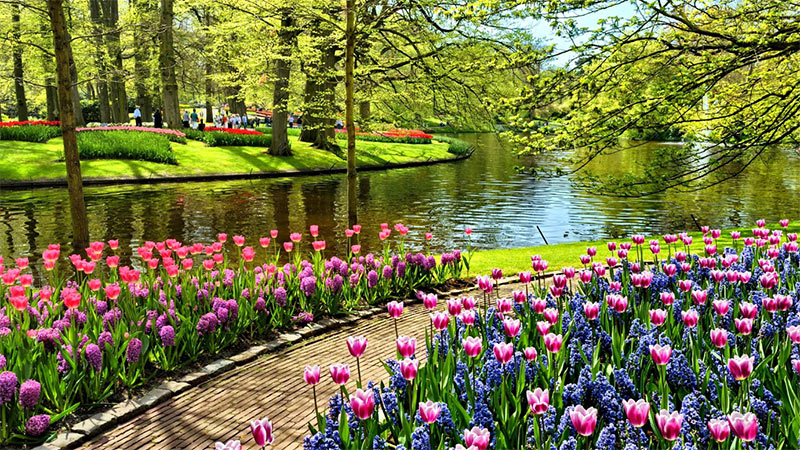
Growing roses is an intimidating prospect. We fear that roses will require lots of time, the perfect growing conditions and endless patience. And, while it’s true that roses do have a few specific requirements, those requirements are not all that difficult. Roses can certainly be a part of the garden of your dreams – they are colourful and bold. You could read books or take classes, but in reality, the best way to learn rose gardening is to buy some roses and develop your expertise.
Before you go shopping for your rose plants, you’ll need to understand the conditions under which roses thrive. Determining the best placement for your rose bushes is key to mastering rose gardening. Roses need sunlight – at least six hours a day to thrive. And, they prefer not to have much of that sunlight in the afternoon when the sun is its hottest. So, find a spot in your garden that gets morning and early afternoon sunlight and you’ve just discovered the best place for your rose garden.
In order to learn rose gardening, you also need to have good soil. Peat moss and compost should be added, and the soil pH should be between 6.5 and 6.8. It is easy to add these essential ingredients to your soil.
The next step you’ll take in your quest to learn rose gardening is to pick healthy, vibrant rose plants. Take some time to consider the purpose of your rose garden. Do you want to have cut flowers? Or, are you more concerned about bringing color into the garden rather than inside the house? Understanding the goal of your rose garden will help you select the right plants.
Next, you should learn to spot healthy rose plants. Examine the leaves closely on the top and bottom. Look closely for signs of black spot, rust and powdery mildew. Black spot looks just as its name implies; it leaves black spots on the leaves of the plant. Rust is a brown spotting on the leaves and it usually appears on the bottom of the leaves first. Powdery mildew is a white powdery substance on the leaves. If you spot any of these problems, don’t buy the plant! Roses are also very susceptible to aphids; tiny white bugs that can attach themselves to the top or bottom of the leaves.
Now you’re ready to take your plants home and plant them. Take your rose bushes out of the container. Examine the roots, and cut back any that are damaged. Dig your hole wide enough to give the roots plenty of room. Make a cone in the bottom of the hole to allow spreading the roots over and around the cone. Place your rose plant in the hole and fill it until the knot just below the plant shoots is covered with an inch of soil. Pack the dirt and then water thoroughly.
Selecting an ideal location is also needed, so think carefully and blend them in with other flowers if desired. If you have a pond, then they go great nearby. You can easily install a pond if you don’t already have one, simply visit Swell who have a huge selection of pond liners.
After a good watering, build up a little mound of soil around the plant. Be sure to read the spacing requirements on any rose bushes you plant. One of the keys to growing roses is to space the plants far enough apart that air can circulate between them.

